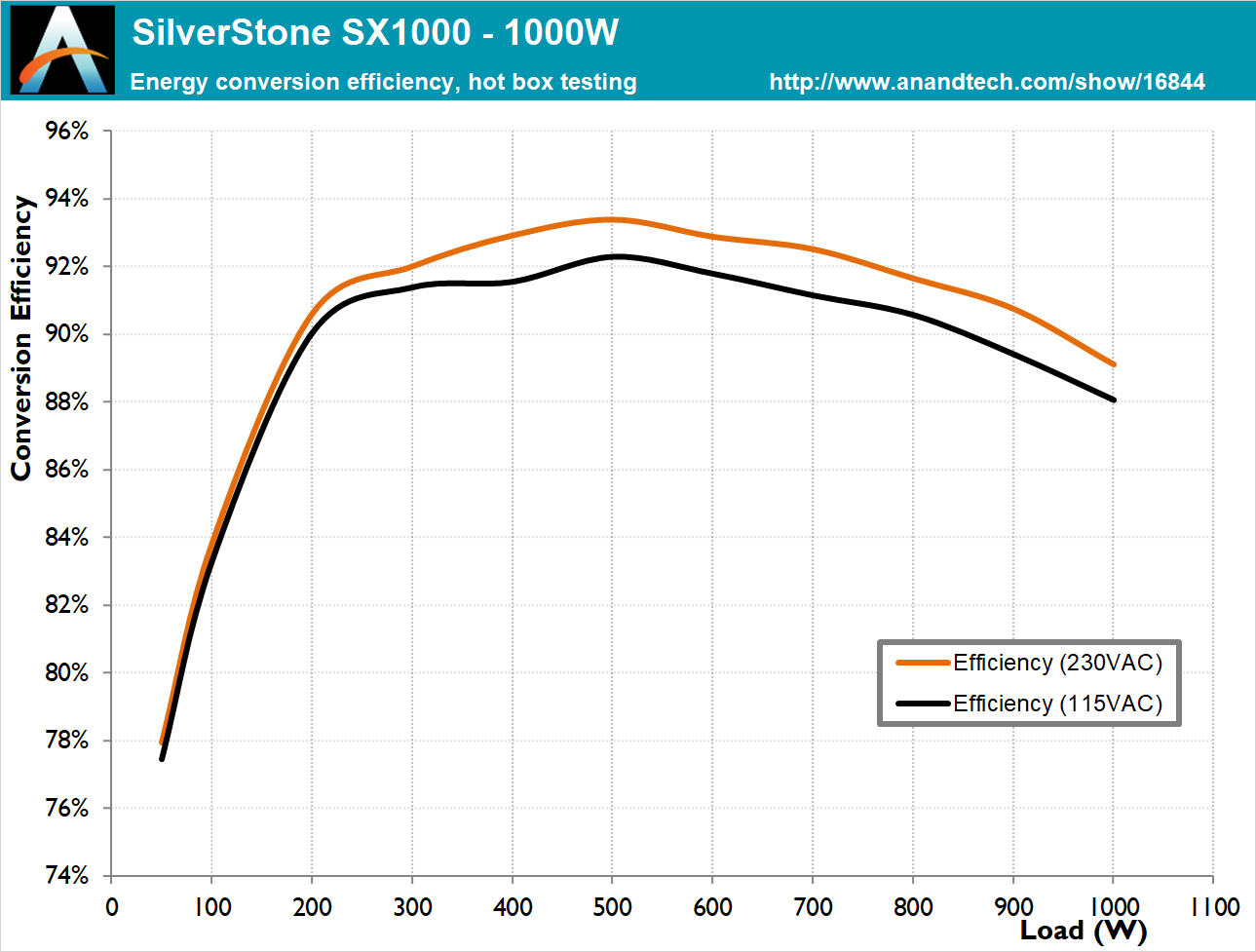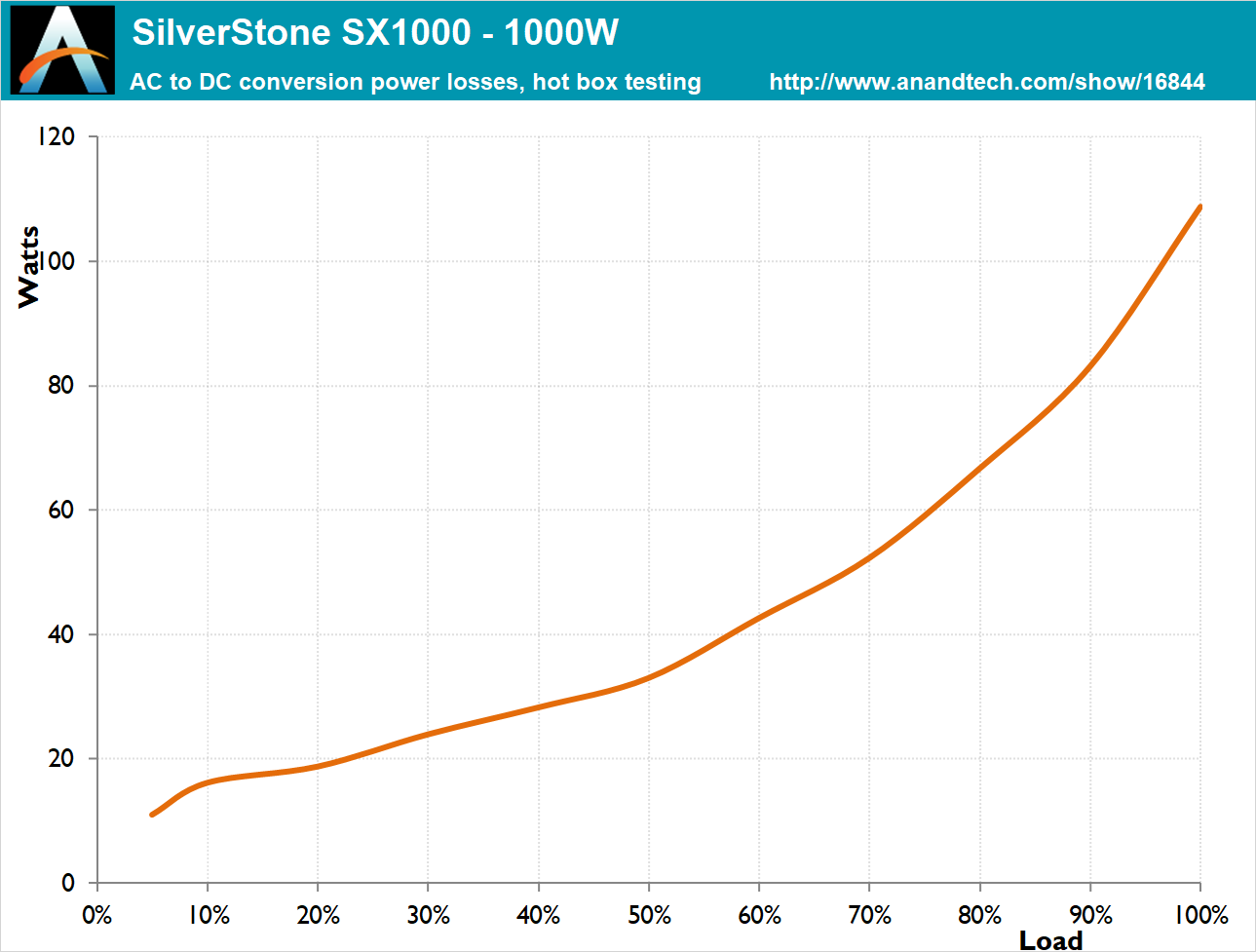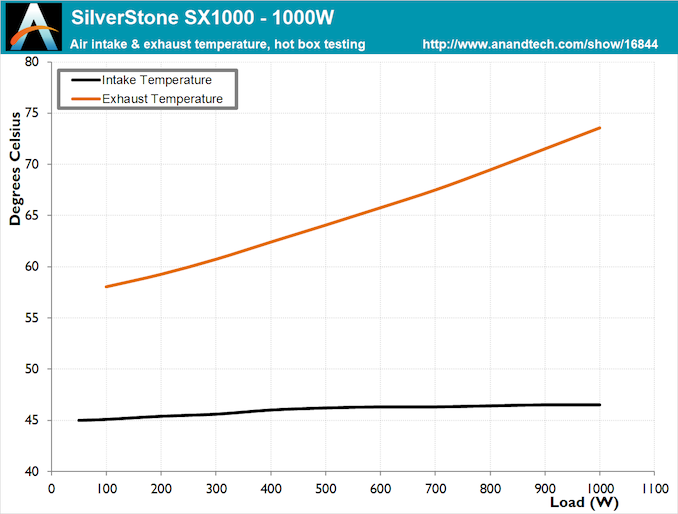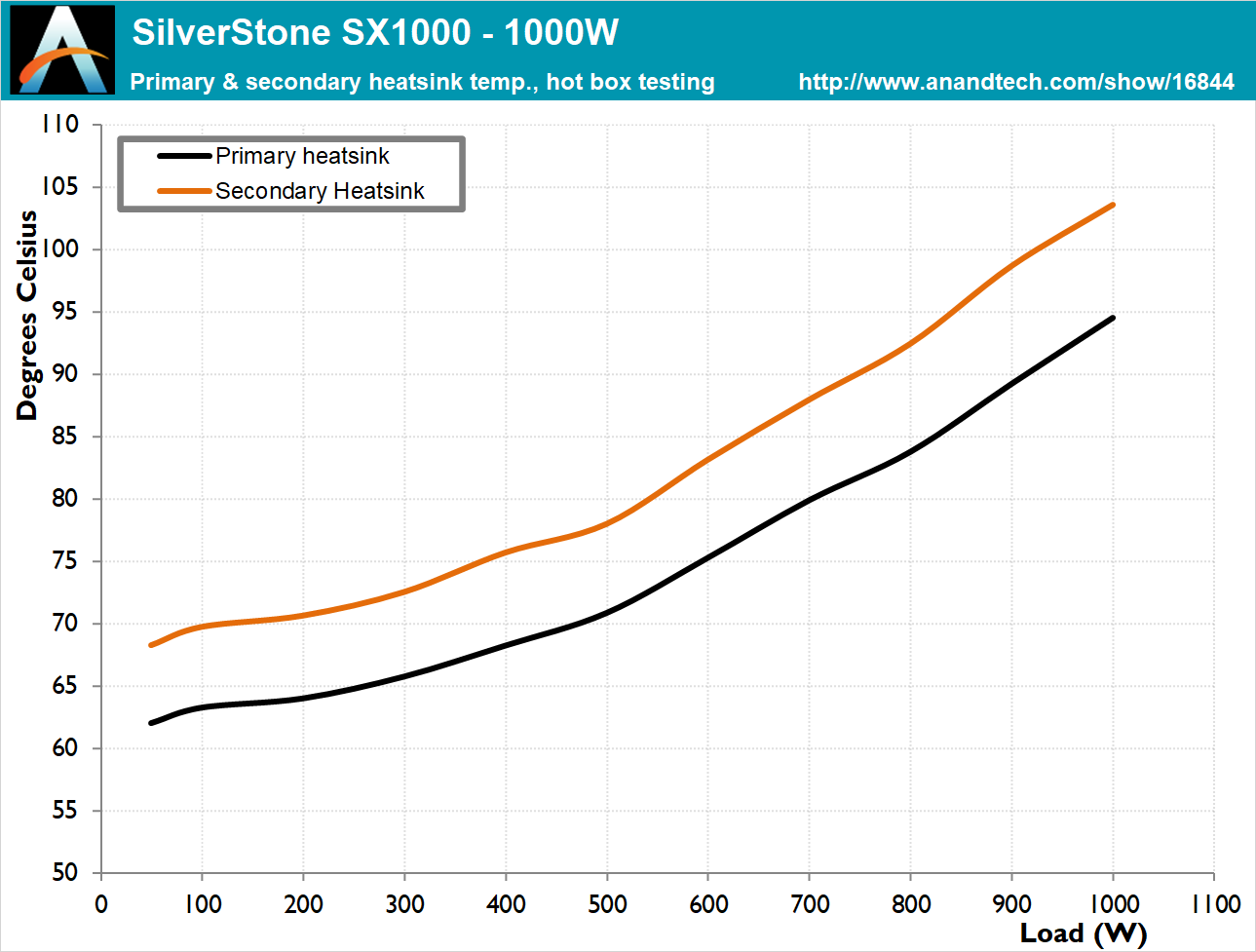The SilverStone SX1000 SFX-L 1 kW PSU Review: Big Power for Small Form Factors
by E. Fylladitakis on July 28, 2021 9:00 AM EST- Posted in
- Cases/Cooling/PSUs
- PSUs
- SilverStone
- SFX
- SFX-L
Hot Test Results (~45°C Ambient)
For the testing of PSUs, we are using high precision electronic loads with a maximum power draw of 2700 Watts, a Rigol DS5042M 40 MHz oscilloscope, an Extech 380803 power analyzer, two high precision UNI-T UT-325 digital thermometers, an Extech HD600 SPL meter, a self-designed hotbox and various other bits and parts. For a thorough explanation of our testing methodology and more details on our equipment, please refer to our How We Test PSUs - 2014 Pipeline post.
The SX1000 is designed to deliver its advertised performance with an ambient temperature of up to 40°C, a bit cooler than our standard 45°C hotbox. Although the unit did operate inside the hotbox without significant issues and did not shut down even at maximum load, there were significant signs of thermal stress. Naturally, the energy conversion efficiency takes a hit, dropping an average of almost 1% across the load range. The drop, however, is not equally distributed, as the SX1000 is almost just as efficient as it was outside the hotbox until the load reaches 40%, then the efficiency degrades as the load increases, and the efficiency drop is almost 1.7% at maximum load. This suggests that the components are getting significantly thermally stressed – which is to be expected, looking at the internal temperatures of the unit.
Rarely ever we see temperatures greater than 100 °C inside a PSU, either because their cooling is sufficient or because their thermal protection circuitry will shut them down. Neither was true for the SX1000, as the temperature did surpass 100 °C under maximum load with the unit operating inside our hotbox. Still, the SX1000 stayed in operation and performed within the expected parameters, even though it was clearly on the verge of shutting down due to thermal overload.
Even though we would expect the fan of the SX1000 to start almost immediately inside our hotbox, it actually did not. The thermal circuitry started the fan when the load reached 100 Watts, meaning that the SΧ1000 should stay dead silent with the PC idling even inside a very hot enclosure. Still, once the load increases even slightly above that point, the fan will start and its speed will start increasing sharply, as the SX1000 is trying to cope with the thermal load in these adverse conditions. It reaches its maximum speed when the load is just 400 Watts, with the sound pressure levels being very high at this point. With the fan unable to do anything more for the cooling needs of the SX1000, the internal temperatures reach uncomfortably high levels when the PSU is heavily loaded under such operating conditions.















37 Comments
View All Comments
patrickjp93 - Friday, July 30, 2021 - link
Noctua and Nidec Servo would like words with you. SSO2 bearings ARE sleeve bearings.Oxford Guy - Tuesday, August 3, 2021 - link
If they can be mounted horizontally they’re not sleeve bearing fans.Samus - Thursday, July 29, 2021 - link
blade shape and shroud design dictate pressure and velocity. bearing has nothing to do with it.Oxford Guy - Thursday, July 29, 2021 - link
Tell that to the manufacturers, then. They don't produce sleeve bearing fans with high static pressure in mind.Oxford Guy - Thursday, July 29, 2021 - link
And... regardless of this debate... Is there someone who wants to argue over my point about sleeve bearing fans needing to be installed vertically in order to have good lifespan?... making their use in power supplies misguided, since they're not mounted vertically.
tonyou - Friday, July 30, 2021 - link
Sleeve bearing fans also come in various versions (hydro, hypro, duro, hydralic, FDB, etc...) that may have enhancement made to provide better stability for horizontal uses too. But generally, you'll get the shortest lifespan by mounting a sleeve bearing fan horizontally upside down (airflow blowing upwards).Oxford Guy - Tuesday, August 3, 2021 - link
FDB fans and those other types are not what I have been discussing.I have been discussing true/classic sleeve designs, the kind that must be mounted vertically.
Don’t move the goal posts.
tonyou - Friday, July 30, 2021 - link
If you have the same fan design and speed, one with sleeve bearing and one with ball bearing. The air pressure generated from the two fans will be identical. The main demand for higher pressure fans come from server/industrial applications and these are made with ball bearing for longevity and reliability as the priority.Oxford Guy - Tuesday, August 3, 2021 - link
Post one example of a high static pressure classic sleeve bearing fan.tonyou - Friday, September 3, 2021 - link
Generally fans designed for high pressure applications have higher top speed (for 120mm fans, usually 2000rpm or more), for which sleeve bearing are not suited for. That's the reason they aren't made because no reputable brand will want to sell a fan that will burn out in a year.The point we were trying to make is that if two fans were to have identical speed, frame, and blade design with the only difference being the bearing used. The pressure generated between the two fans will be identical.